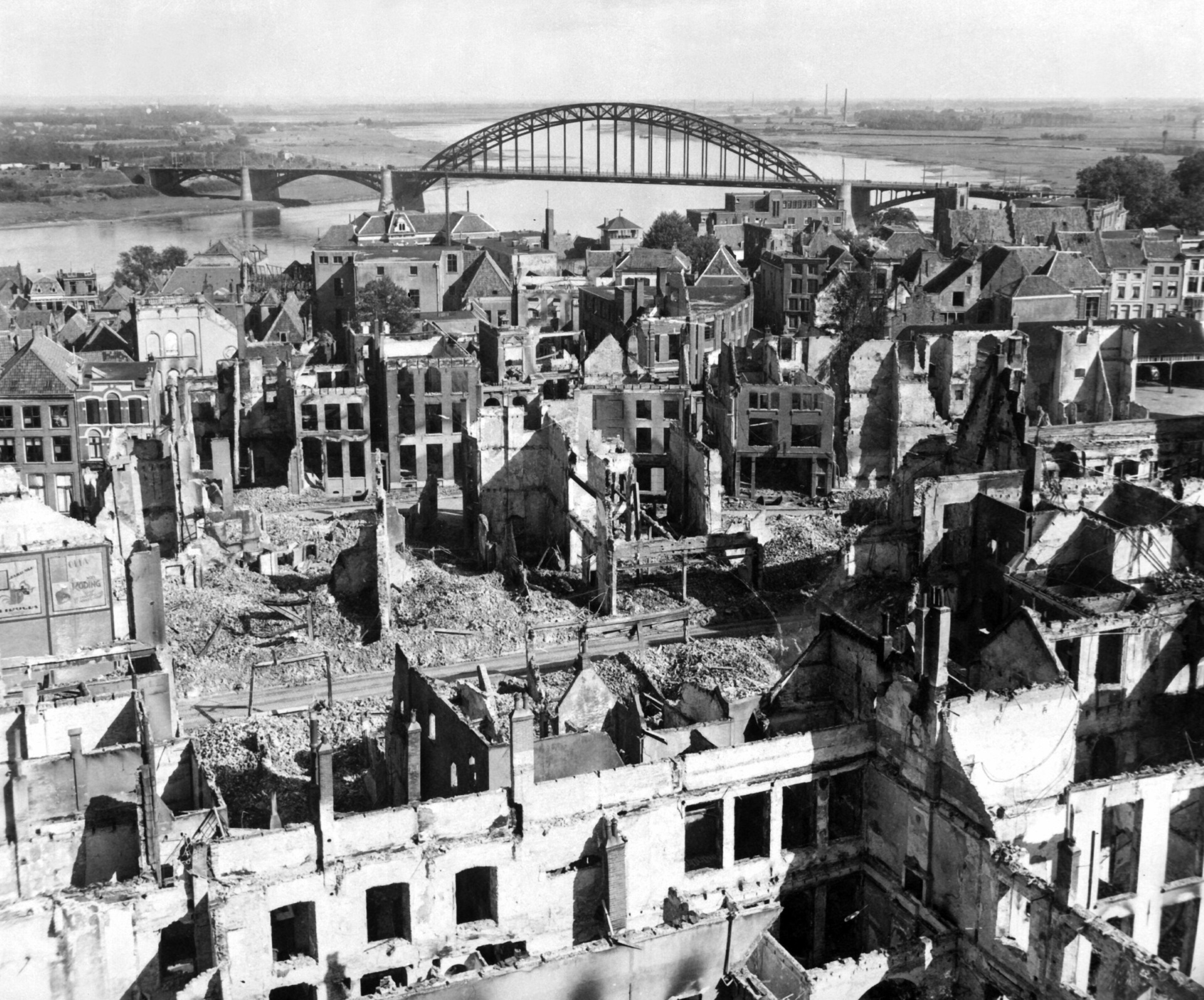
It was a Russian soldier who hoisted the flag over the German Reichstag in the closing stages of the Second World War. It just as easily could have been a British or an American or even a Canadian soldier, had Operation Market Garden been a success. The British and Americans would have reached Berlin weeks before the Russians and the war would likely have ended around Christmas of 1944. Here is a look at the bold operation which could have won the Allies the war.
Hatched by General Bernard Montgomery, the head of the British forces in Europe, Operation Market Garden involved 32,000 British and American troops penetrating deep behind enemy lines to capture the canals and rivers on the Dutch-German border. After a successful D-Day invasion at Normandy, the Allied troops, under heavy fighting, slowly made their way across France.

Montgomery, at left, plans Operation Market Garden courtesy
"The glittering triumph of the D-Day landings in France had become bogged down in the slow and costly progress through the Normandy fields and hedgerows which the Germans defended with such skill and tenacity." (http://www.bbc.co.uk/history/worldwars/wwtwo/battle_arnhem_01.shtml)

The Allied Army advances to the Dutch/German border (July to September 1944) courtesy http://www.warfaremagazine.co.uk/articles/Operation-Market-Garden-17-September-1944/124.
However, it was at this point that the German resistance stiffened. Troops that were in reserve since D-Day waited for the green light, only to have their operation cancelled more than once. Finally, it appeared like it was time to advance. The plan was to make a thrust deep into the German lines. Parachutes and gliders were to land at Eindhoven, Nijmegen and Arhem. General Browning was given some alarming information: two Panzer divisions were tucked underneath the woods near their landing site. Operation Market Garden went ahead as planned.

British Paratroopers on their way to Arnhem con September 17, 1944 courtesy http://www.iwm.org.uk/history/the-story-of-operation-market-garden-in-photos.
The day dawned with a cloudless blue sky and a warm autumn sun. An armada of planes, twenty abreast, flew across Holland's flat terrain like an "airborne carpet". It was a glorious sight: paratroopers dotted the sky. Reality hit however when they landed. Tanks hit the leading nine vehicles of the Allied advance. Their radios didn't work making communication impossible. Most of the bridges that they wished to capture were blown up before they arrived. The final bridge at Arnhem proved the most difficult.

"The Bullets hitting the water looked like a hailstorm, kicking up little spouts of water. When we reached about the halfway point, then the mortar and artillery fire started falling. And when a boat was hit with an artillery or a mortar shell, it just disintegrated and everybody was lost." (http://www.bbc.co.uk/history/worldwars/wwtwo/battle_arnhem_01.shtml)
The German tanks were "devastatingly accurate". The Allies abandonned their positions near the bridge and tried to fight their way out. The Parachute Divison lost 1500 men to death and another 6500 were captured, many of the prisoners wounded. It would be another four months before the Allies would cross the Rhine again.

Brigde at Nigmegen courtesy http://www.historytrips.eu/operation_market_garden.html.
Note: This post is dedicated to Mr. Lyle Sherman, the grandfather of my sister-in-law, Julie Tufts, one of the thousands of American soldiers who fought bravely in Operation Market Garden.
No comments:
Post a Comment